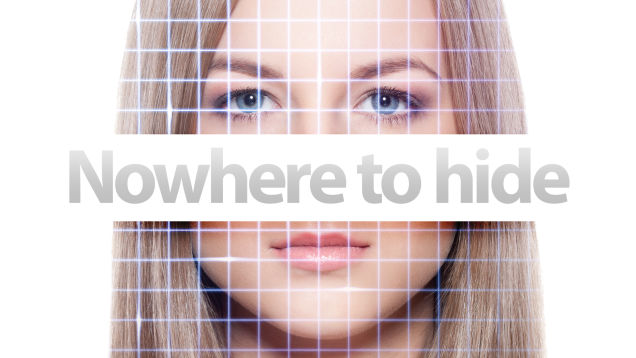Government agencies are currently in the process of secretly testing new surveillance and monitoring at points of entry into the United States, according to leaked documents obtained by Motherboard. You’re going to want to hear about this.
The leaks detail three programs that use different parts of your body to identify you. One of the “biometric recognition” programs is currently underway at Washington Dulles International Airport, while the other two are planned experiments.
Facial recognition in Washington DC
According to Motherboard, US Customs launched a secret facial recognition program at Dulles Airport outside Washington on March 11th. For the next two to three months, officers will randomly select travellers and take their photo as part of the “1:1 Facial Recognition Air Entry Pilot.” The snapped photo will be run through a facial recognition algorithm and compared to the photo stored on the chip in their passport. The officer will be given a “match confidence score,” which they can use to determine whether a person needs additional inspection to confirm their identity.
The whole program, including a subsequent evaluation period, will run a total of 19 months.
Fingerprint scans in Atlanta
Meanwhile, a forthcoming “Biometric Exit (BE) Mobile Experiment” at Atlanta-Hartsfield International Airport will use handheld devices to record both the entrance and exit of people from the United States. According to Motherboard’s reporting, this is most likely a fingerprint scanner. The goal of the program is to “confirm with certainty that a foreigner traveller has departed the United States.”
Iris scans and facial recognition at the US-Mexico border
But wait, there’s more. Customs and Border Patrol will be installing iris scanners and facial recognition cameras at entry kiosks in several locations at the US-Mexico border. It’s called the “Pedestrian Biometric Experiment,” and according to leaked documents, the biometric scanning will be limited to the entry and exit of the Otay-Mesa border point at the United States-Mexico border to start. That will be coupled with increased biographical info — i.e. your passport info — to track entrances and exits across the border.
It appears the purpose of this study is to test the systems we have for enhanced data collection at the border. What kind of threats do they want to target? It’s pretty vague.
What do we make of it?
OK, so these are just tests, but the bigger picture is that increased data collection and surveillance is increasingly the norm across government agencies. In the coming years we’ll certainly see technologies of this sort implemented everywhere — not just at borders, but on the street and at government buildings. Pervasive surveillance and data capture will be the norm.
If you find that upsetting, you should! But it’s not clear what can be done to stop it. [Motherboard 1 and Motherboard 2]
Picture: Shutterstock/Pyndurin Vasily
